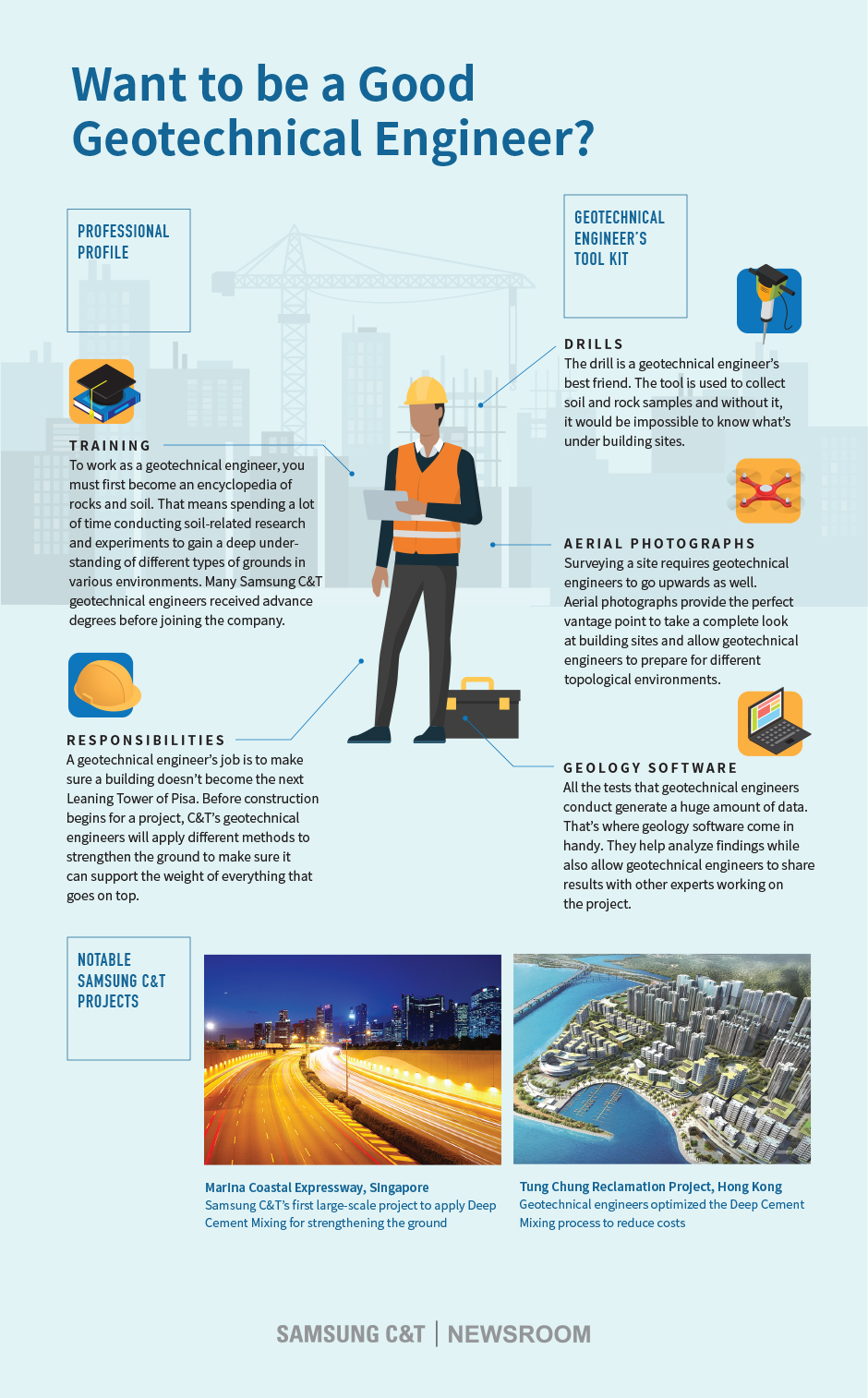The 6-Minute Rule for Geotheta
Table of ContentsGeotheta Can Be Fun For EveryoneSome Known Facts About Geotheta.The Best Guide To Geotheta3 Easy Facts About Geotheta Described
They work together with civil engineers, architectural designers, designers, and other specialists to incorporate geotechnical considerations right into the overall project layout and building and construction procedure. This needs efficient teamwork, coordination, and interaction to make certain that the geotechnical elements align with the project objectives and fulfill regulative requirements.Mining & Materials Design: Principles of exploration, penetration prices, and factors influencing the choice of exploration technique. Blowing up techniques in surface area and underground functions. Mechanical and continuous techniques to fragmentation, including longwall shearing and fullface boring.
Modelling of piece and particle dimension distributions; comminution as a transfer feature. Comminution modern technology: crushing, grinding, size category. Integrated evaluation of fragmentation and comminution operations. Used by: Mining & Products Engineering.
3 Easy Facts About Geotheta Described
Bachelor's level programs in civil, geotechnical, geological, and environmental engineering generally last 4 years and consist of general education and learning courses in English, social science, and the humanities, in addition to programs in sophisticated maths, architectural geology, and liquid mineralogy. (https://slides.com/geotheta)
Geotechnical engineering involves the analysis of the soil and rock problems at a certain site, and their ramifications for the growth of that website. As many structures depend on the ground for assistance, it lacks surprise that a comprehensive understanding of the ground problems, and the viability of structure systems, are important to the long-lasting security and efficiency of the structure or framework.
Being experts in the examination of geological formations and ground behaviour, geotechnical engineers do clinical examinations and screening to recognize the impact these geological formations may have on the style and building of structure, civil and facilities tasks. This know-how is crucial for the design and construction of buildings, roads, tunnels, dams, bridges, and supply of water and sewage systems.
The geotechnical group at Douglas Partners regularly seek advice from with engineers, layout designers, programmers, and builders to make recommendations on design and growth propositions to make sure that the constructed frameworks are appropriately developed for the ground conditions. As an example, the layout of footing systems requires to think about the weight of the structure, the ability of the ground to sustain that weight along with movement resistances and effective building.
The Ultimate Guide To Geotheta
This task is greatly streamlined by the use our Douglas Map geospatial platform that makes this info easily easily accessible in a very easy to make use of internet internet browser user interface. A geotechnical designer will guide the drilling of boreholes and test pits to accumulate soil and various other samples, and likewise assess surface area features and ground exposures to develop a geotechnical model of the subsurface conditions.
Depending on the job kind and ground conditions encountered, laboratory testing might among other points assess stamina, compressibility, sensitivity and/or leaks in the structure of soil and rock samples. Hereafter information is accumulated and looked at, the results are utilized for a geotechnical design of the website, which is usually offered as sections across the site.

A geotechnical examination by nature can only evaluate the ground problems at the areas pierced or dug deep into. Natural variants in dirt and rock conditions can occur throughout a website and between examination places. It is as a result good method that the geotechnical designer be retained throughout construction of the project to offer on-site verification that the ground conditions come across follow the assumptions and suggestions given in the geotechnical examination record.
Geotheta - Questions
Geotechnical engineers use their thorough expertise of dirt and rock to analyze danger and resolve problems on varied facilities projectsGeotechnical design is a specialist branch of civil design which checks out the behaviour of planet materials and the application Click Here of soil and rock technicians. Geo Tech Engineering. As a geotechnical designer, you will certainly examine the physical, mechanical and chemical buildings of dirt and rock in order to develop structures, preserving structures and earthworks
Geotechnical design is carefully connected to and overlaps with, both engineering geology and ground design - https://trello.com/u/geotheta. It's possible to specialise in geotechnics or job for a geotechnical firm yet be understood as an engineering rock hound or a ground designer. As a geotechnical engineer, you'll require to: develop and maintain partnerships with clients and various other professionals entailed in the website, throughout each projectmaintain safety and security requirements on website be mindful of cost implications when you make recommendationsstudy geological maps and airborne photographs from an array of sources and from various time periodsexamine building and construction prepares to see how practical they are based on your understanding of the siteinvestigate dangers or geological risks for the sitesearch for eco delicate features, such as garbage dump start to establish factual and interpretive ground modelsplan area investigationsdrill and analyse samples of bedrock, soil, groundwater and added products oversee various other experts on sitesolve technological problems as they develop, such as unexpected frameworks at drill sitesmonitor conditions throughout and after construction to make certain structures are steady in the brief and long termadding data collected on site to your first researchcreating geotechnical calculations, drawings, and 2 or three-dimensional computer system designs analyzing the datamaking recommendations regarding the recommended use of the site
